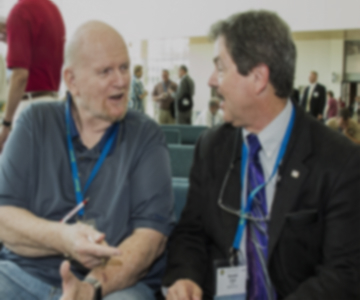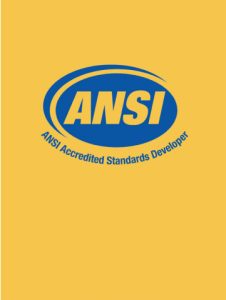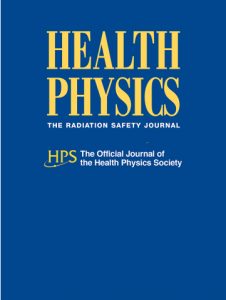I accompanied my mother to a PET (positron emission tomography) scan. Because of her advanced age, she was nervous about the scan. I stayed with her in the room after she was given the radioactive injection. I sat next to her for about 45 minutes until they came to take her for the exam. I also stayed with her during the PET scan. I just read that after receiving the radioactive injection, the person should be isolated since anyone close to that person is at risk of radiation exposure. Could you tell me how much radiation I was exposed to and if should I be concerned?
The simple answer to your question is that you received very little radiation exposure from this situation and there is little cause for concern. In addition to the time you spent around your mother after the radioactive material was administered to her (45 minutes), the exposure you would receive would be dependent upon how much radioactivity was administered and how close you were to your mother during the 45 minutes before and during the scan and how long it took to perform the scan. Without those details, I can’t provide the exact radiation exposure you received, but we can make some assumptions to come up with a reasonable estimate.
The typical amount administered for most PET scans is 370 to 555 megabequerels, presumably of FDG (fludeoxyglucose [18F] is the most commonly administered radiopharmaceutical for PET scanning). Even though you indicated the prescan time was about 45 minutes, for simplicity and conservatism, let’s assume that the prescan time was actually an hour. I suspect your mother was asked to void her bladder immediately prior to the PET scan and some of the radiopharmaceutical would be excreted in the urine, but let’s ignore that, just to be conservative.
Most PET scans are performed in about 30 minutes, but again, for conservatism, let’s assume you were with your mother during the scanning procedure for another hour. In reality, the distance you were from your mother probably varied during the two-hour prescan and scanning period, but I suspect a reasonable average would probably be about 1 meter.
Given the aforementioned assumptions and using some dose estimates from the American Association of Physicists in Medicine (AAPM Report No. 108), the estimated exposure you would receive over that two-hour period would be about 0.07 millisievert (mSv, a millisievert is a unit of radiation dose equivalent). Presumably you may have been near your mother following the scan (e.g., to drive her home), so even though you didn’t mention that, let’s assume you received some additional exposure from that as well. In fact, just to be ultraconservative, let’s assume you were 1 meter away from your mother from the time the radiopharmaceutical was administered until it all essentially was eliminated from her body (that takes about 18 hours). Even with those conservative assumptions, the total exposure you would have received would be about 0.13 mSv.
So how much is 0.13 mSv, what does it compare to, and what kind of “risk” does it present, you ask. We can make a comparison to what is called “natural background” radiation. Natural background radiation is what we all receive from radiation coming from outer space, radioactive materials in the soil, and radon gas that may be in our homes. According to the National Council on Radiation Protection (NCRP Report No. 160), the average member of the United States gets about 3.11 mSv from all of these natural background sources every year. Thus, using the highest number calculated above, what you received from being around your mother was only 4% of what the average member of the US population will get from natural background this year.
Another comparison we can make is with airline travel. The exposure we receive from outer space is higher when we spend time at higher altitudes. According to the previously mentioned NCRP report, a round-trip flight from New York to Tokyo would result in an exposure of a little over 0.13 mSv.
So, the next question is what is the risk from 0.13 mSv. Radiation exposure has been shown to cause cancer and leukemia at levels that are over 700 times higher than the calculated amount you received from your mother. However, whether or not radiation causes cancer or leukemia at very low levels is a matter of constant debate. According to the Health Physics Society (an organization of radiation protection professionals) position statement “Radiation Risk in Perspective,” the likelihood that exposures of less than 50 mSv will cause significant health effects (e.g., cancer or leukemia) is insignificant or nonexistent.
Finally, you may ask why the facility where your mother was scanned has a policy to isolate PET patients from others if the exposure and risk is so small. The answer to that is related to the philosophy of maintaining radiation exposures “as low as reasonably achievable,” sometimes referred to as the “ALARA” philosophy. Since we can’t absolutely, positively say the risk of health effects from any radiation exposure is “zero,” we assume there may be some risk and should avoid that risk, regardless of how small it may be if it is “reasonable” to do so. Thus, in the case of your mother, it was not considered “reasonable” to isolate your mother from you during this PET procedure due to her uneasiness, with the understanding that the risk to you from the radiation exposure was insignificant or nonexistent. Furthermore, we also consider the risk vs. the benefit of radiation exposure. That concept is generally applied to the risk vs. the benefit to the individual exposed; however, in this case, while you didn’t actually receive the benefit, the risk to you is extremely low and there was a distinct benefit to your mother. I certainly would agree with that and appreciate the fact that the facility where your mother was scanned recognizes and properly applies the risk/benefit idea and the ALARA philosophy.
Mack L. Richard, MS, CHP
Radiation Safety Officer, Indiana University Medical Center
Answer posted on 22 October 2010. The information posted on this web page is intended as general reference information only. Specific facts and circumstances may affect the applicability of concepts, materials, and information described herein. The information provided is not a substitute for professional advice and should not be relied upon in the absence of such professional advice. To the best of our knowledge, answers are correct at the time they are posted. Be advised that over time, requirements could change, new data could be made available, and Internet links could change, affecting the correctness of the answers. Answers are the professional opinions of the expert responding to each question; they do not necessarily represent the position of the Health Physics Society.






